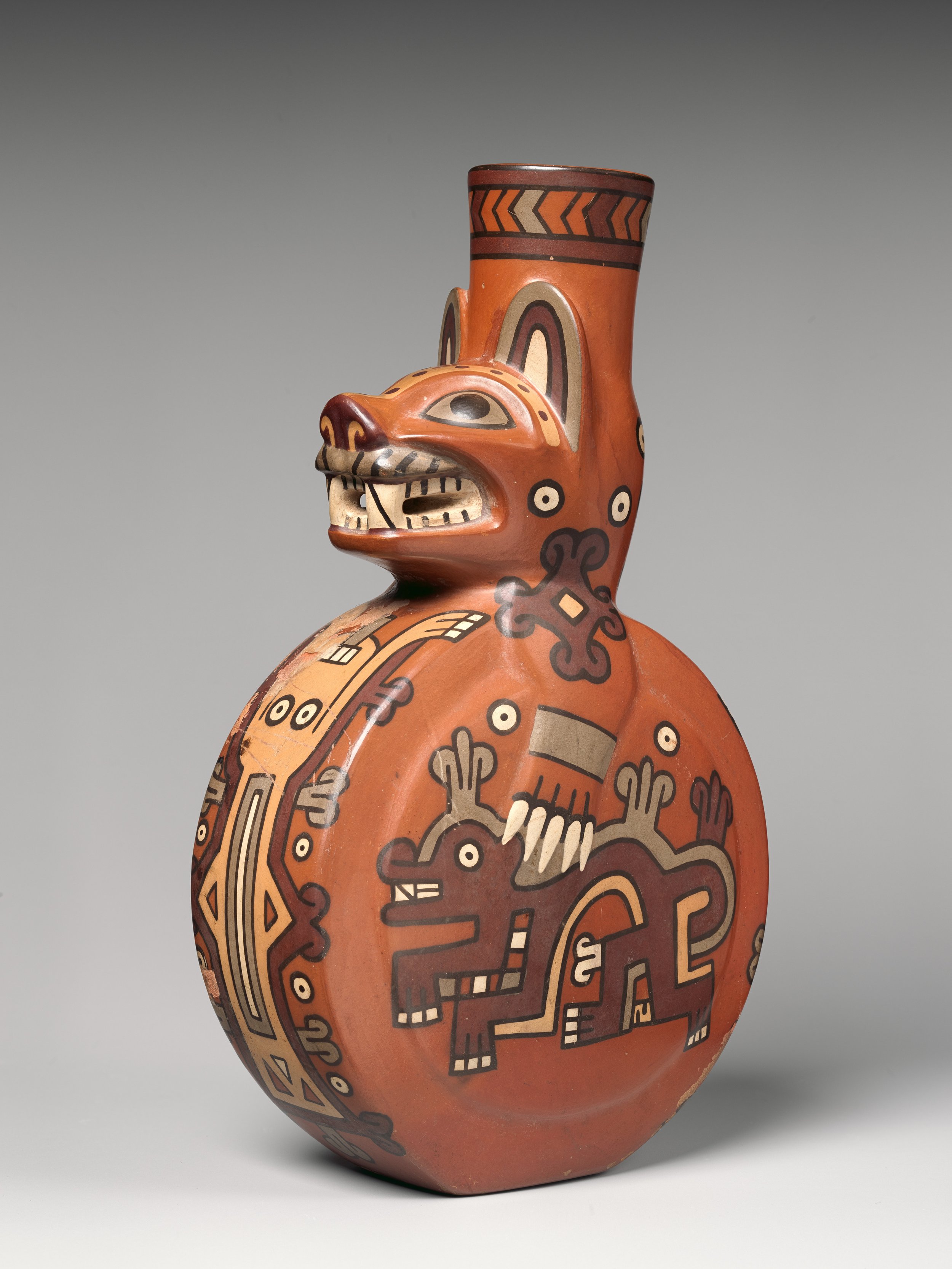Why We Make, A Look At 3 Historical Pottery Pieces at the Met
Why do we make the pottery forms we make? That’s the question we asked ourselves while working at the pottery studio this week while preparing for the Fall Wood Firing.
Several hours on the pottery wheel produced a number of swirly clay tumblers, ceramic mugs, large vases, tall bottles, and a few round, squatty ones. Each unique, but all with historic roots dating back centuries.
Fragments of old clay vessels
Transporting Prized Liquids like Wine and Oil
Let’s look at the clay bottle for example. While today plastic bottles are everywhere, and before that they were made from glass and clay.
One form of that bottle, the Amphora, a traditional form of the ceramic bottle, was used by the Egyptians, Greeks, and Romans to transport their wines and oils throughout the mediterranean.
Unique in their design, the Amphora neck limited oxygen exposure to wines, and their tapered bottom collected sediment. Sealed with beeswax, they were durable, and easy to transport.
Bottles Made for Necessity, Convenience, or Just Because You can?
Yes, some bottles were made for necessity, and some to make life easier. In some cultures pottery forms had religious importance, and in others they heavily decorated and represented the wealth of the ruling class.
“History as art and entertainment serves a real purpose, on aesthetic grounds but also on the level of human understanding.”
While today we may not use clay bottles out of necessity as much, and we may not need it to show our wealth, these traditional forms are part of our history. Studying history helps us build an understanding of each other as people, it helps us understand how the world works, and gives us knowledge we can build on and limits we can push.
Learning from Historical Pottery Pieces
1. Bottles don’t have to be round
When we think about bottles, we picture them as being round. With a cap,filled with liquids, and easy to transport. But nobody said a bottle had to be round.
Take a look at this bottle, made in the first half of the 19th century, during the Joseon Dynasty. Bluish white in color, its distinct flat sides are eye-catching.
Credit: Korean Square Bottle, the Met Museum
Maybe its shape made it easier to pack into the official court kilns? Maybe the maker thought the form was simply beautiful? Either way, it’s a bottle, it’s not round, and our bottles don’t need to be either.
2. Our Forms Can Act as 3D Canvases
We can debate form, and function, or we can acknowledge that the work we make is more than a bottle, a cup, or a mug. They are surfaces capable of displaying expressions, sharing our thoughts, and pushing boundaries.
Credit: Bottle in the Shape of Feline, The Met Museum
This feline bottle, made in Peru, circa 600–900 A.D., is a great example of the possibilities for expression our forms can provide. The detailed slip decoration emphasizes the form alterations, and the subtle details such as the hands on the side, and the orientation means the feline face faces the user.
While the exact use of this bottle is unknown. It’s thought that it was intended for a burial, or perhaps for an individual's use. One thing is clear however, the bottle was a canvas, and intricate slip details emphasized its shape and small details.
Maybe next time we throw a piece on the potter’s wheel, we can let its imperfection go, and incorporate them in our surface illustrations and designs?
3. Play with Proportions
Today’s society relies on standardization and mass production to keep up with demand and make modern day conveniences available. Coffee mugs hold standard sizes, and water bottles come in set ounces. But as makers, we don’t have to hold ourselves to those expectations.
Credit: Water Bottle from Tutankhamun's Embalming Cache, the Met Museum
This clay water bottle from Tutankhamun's Embalming Cache, ca. 1336–1327 B.C., is a great historical example of the unique proportions a form can have. Featuring a long slender neck, and a decorative collar, this bottle was likely used during a purification ritual, or to serve a special spice beverage during the funeral banquet.
Proportions are important when making our clay forms on the potter’s wheel or while hand building with coils or slabs. Proportions can impact function, they can help to emphasize our surface designs, and they give us as makers a way to help our work standout where mass produced pieces cannot.
In Summary
So why do we make the forms we make? Our guess, because we are human, and as humans we build on our history and the knowledge we have of how the world works and what's possible.
As individuals we have a desire to express ourselves. Pottery, or art is an expression of our emotions that for some cannot be expressed through words alone.
When we make, we are the designers, we control the surfaces, we determine the proportions, and every piece of clay we touch is an opportunity to express ourselves.
There will always be a little part of history in everything we do. And when we make ceramic art, we are adding to our own history as artists and makers.




